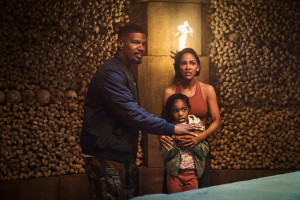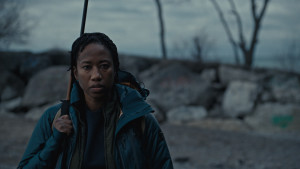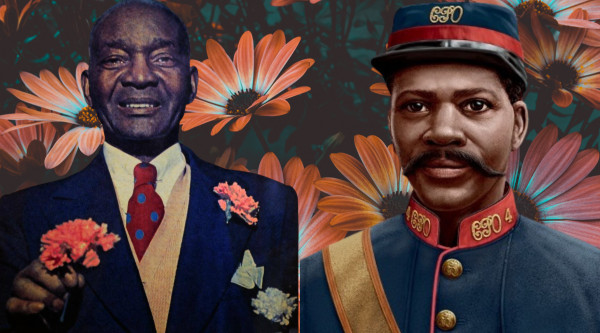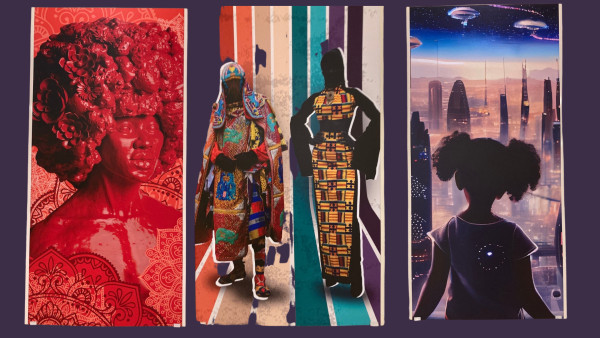I would stay a little longer, balancing off his leg and sometimes jumping off as soon as the puck hit centre ice. My dad was an avid hockey fan. He watched the matches fervently, screaming at the Habs when a player missed a slapshot from mid-ice. I lost interest in the game since he passed. But it's funny how back then, as a kid, I didn't think to question why there weren't any hockey players that looked like me. As an adult, I never thought I would learn that Blacks in hockey date back even further than we can imagine.
Black Canadian Oscar-nominated director Hubert Davis (Hardwood, Giants of Africa) has taken up the enormous task of sharing these magnificent stories via his new documentary Black Ice. Based on the book Black Ice: The Lost History of the Colored Hockey League of the Maritimes, 1895-1925, written by George and Darril Fosty, Davis is painting a collection of Black hockey interpretations from past and present. The documentary is produced by Vinay Virmani of Uninterrupted Canada, the Canadian subsidiary of NBA phenom LeBron James' production company. Both James and Toronto's Very Own Drake serve as executive producers.
Davis' discussions with members of the Coloured Hockey Leagues of the Maritimes (CHL) is a deep dive into Canadian history and the influence of Black contributions to Canada's favourite pastime. And this is a good 25 years before basketball even entered the scene. The league was formed in 1895 in Halifax, Nova Scotia. So we're talking about teams with dynamic names such as the Africville Sea-Sides, Dartmouth Jubilees, Halifax Diamonds, Amherst Royals and the New Glasglow Speed Boys.
Many people were and are dumbfounded at the revelations. Believe it or not, Davis was too when he found out about the project. "I had never done anything about Black Canadian history before in my work. And so what was interesting was that the project came to me. I wasn't looking to take on a feature doc because I know how gruelling the processes are to make them, especially in a tight [schedule and] turnaround to try and get into TIFF this year. But I think what was compelling me was this idea of why I wasn't engaged with Black History. You know, I grew up in Vancouver. I'm Canadian. Yet, I have this idea somewhere in my head that somehow Black History in this country wasn't significant. And I thought, oh, that's interesting that I have that point of view. I wonder where that comes from. Then that kind of gets you engaged in it because you're like, well, if I don't know about this story, but we all should know about it, then it has to be told."
There's no secret where it stems from and how Canadian Black History has always unceremoniously been left behind. Yet when we think of Black leagues, the Negro Baseball Leagues from our cousins down south usually come to mind. In word association with hockey, the word 'Black' would be nowhere in the peripheral view. Nonetheless, even while contributions and innovations from Black players were conveniently stolen or passed over, the influence of the CHL still resonates today in what we know as the National Hockey League (NHL).
"So in the articles that were written, one of the players lifts his stick above his shoulders to take a shot. They describe it as a slap shot; that's that baseball-style swing. What would that be? That would have to be the slap. And they talk about a goalie. He would go down on the ice and play outside the crease. It was how they were described in the game back then. It's much more, and there's much more speed. There's a looseness around the rules that existed," says Davis.
He continues, "The innovations came through while talking to people who had studied and gone through the articles. It's the idea that they never really got the credit for many of those things, doing them in the time they did. Because again, if those stories aren't told, then it almost becomes like folklore."
In correlation to storytelling, the Black histories and experiences of yesteryear are steeped in our oral traditions. The Black players learned their skills and gained knowledge by passing down stories and processes. All in all, it always came down to community. This initiative was born from the collective of Black citizens who came together—sons and grandsons of enslaved Americans—with friends and family to partake in a game that brought joy.
Davis shares, "I was blown away by the idea of these communities and descendants of the CHL. Some of them were in more well-known places, like Africa, but then there were other places. Those communities were all over the East Coast, and they were thriving. These people had such joy and shared their memories of growing up in the community. There was a real kind of sadness too, with that community getting dispersed and people having to leave for economic reasons to find education because of blatant and systemic racism."
He continues, "So I was left with this better understanding of the community that was and why it no longer is. I think that explains a lot of the Black experience in Canada— having something but not being fully seen. What are the downsides of integration? We don't often think about that. We think of it as they went and got better jobs, and everything was okay. But what is the cost of that? Sometimes I think about people being disconnected from their roots and spaces that aren't always welcoming, and really, that's what hockey is. It's a space that is not always welcoming to people of colour. That continues today. So I think there's a real kind of parallel."
In Black Ice, the talk of deep-rooted anti-Black racism reflects in the stories shared by some of today's finest players on the ice. P.K. Subban, Saroyer Tinker, and Akim Aliu all leave legacies that will stand in history books. However, each has had incidents to deal with while chasing their hockey dreams. It's disheartening, but today's greats are not as different as the greats of long ago. They are still experiencing the same systemic issues that have seeped into the game. The 'shut up and keep it moving' code of silence is a heavy burden to bear." That's why you see these problems continue to exist over and over and over and over again. It will never actually end unless someone seriously says, 'hey, let's look at the systemic problems in the sport.' There is no end to it. All these incidents that are happening that I want to document are all happening now. And I want to make that clear. I think there's this idea of how things worked in the past and that things always get better. They don't. They only get better if you are willing to make the change," says Davis.
There is so much history embedded in the stories in the documentary. And so many facets of perspectives and anecdotes shared over time straight from the lips of descendants. It will be amazing to watch everything come to life via Black Ice. Also, it doesn't escape us how paramount this is to preserve our history in Canada. It's a monumental moment because the game is known to be Canada's favourite past-time. Davis says, "A professor said, 'it's integral to everything that this country thinks it is.' And I was like, that's the last line of the film because it was just nice to hear it. I felt like, man, I wish I had heard that more when I was younger. It validates your experience and what you're doing. You're not a guest. This is you. You have ownership of the space. So that's what I was most proud of."
The next showing for Black Ice at TIFF is Wednesday, September 14 at 9 pm.
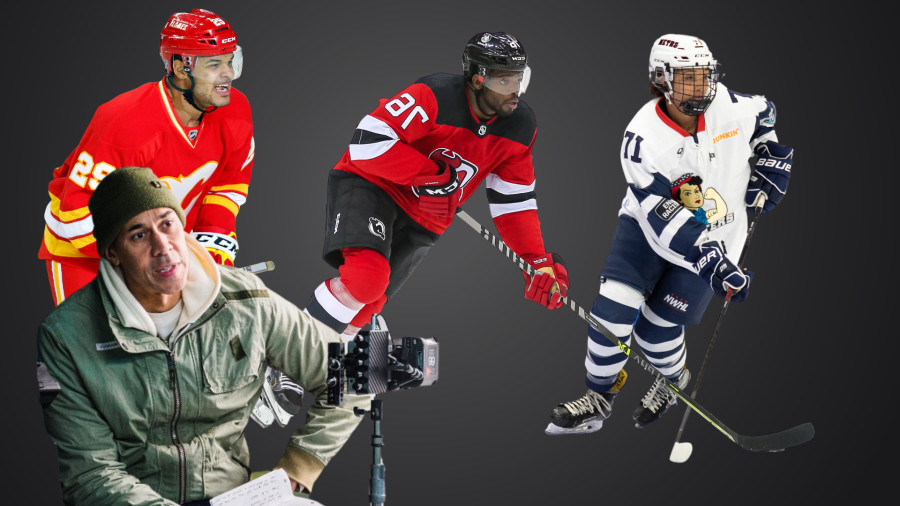
 By
By 




